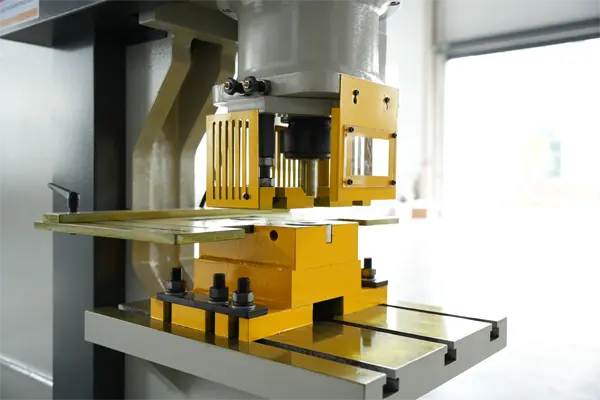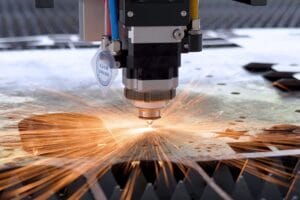Dive into the world of punch press machines and discover how they revolutionize metal forming processes. Learn about their core components, working principles, and how to select the perfect punch press to elevate your manufacturing operations. Engage with leading Punch Press and Hydraulic Press Manufacturers to ensure a well-informed investment.
- What is Punch Press Machines
- Types of Punch Press Machines
- Core Components and Their Functions of Punch Press Machines
- Working Principle of Punch Press Machines
- Applications of Punch Press Machines
- Advantages of Using a Punch Press
- Safety Measures and Best Practices
- How does a punch press compare to other forming machines?
- What are the common materials processed using a punch press?
- How do I choose the right punch press for my business?
- Choosing a Right Punch Press Manufacturer
What is Punch Press Machines?
A punch press machine is an invaluable asset in the metalworking sector, playing a critical role in manufacturing processes. It's a machine that shapes metal workpieces through a pressing or punching action. The essence of a punch press lies in its ability to transform a flat metal sheet into a shaped part with the precise dimensions required for a particular task.
At the heart of the punch press machine is a set of tooling, comprising a punch and a die. The punch is a hardened tool steel blade which is mounted on the ram of the machine. The die, on the other hand, is a hollowed out block of hardened steel which is mounted on the bed or bolster plate. When the machine is activated, the punch moves downward into the die, thereby shearing or punching out the desired shape from the metal sheet.
Punch press machines come in various configurations and capacities, catering to a wide range of industrial applications. They range from mechanical to hydraulic, and from manual to CNC (Computer Numerically Controlled) models. The versatility of punch press machines makes them a go-to solution for a myriad of metal shaping tasks, from simple hole punching operations to complex bending and forming processes.
As a leading Punch Press Manufacturer, we invest heavily in the design and engineering of our machines to ensure they meet the stringent demands of modern manufacturing. Our offerings are not just limited to punch presses; as a reputable Hydraulic Press Manufacturer as well, we provide a comprehensive range of hydraulic presses designed to handle an extensive array of forming operations.
Selecting the right punch press machine is crucial for achieving the desired level of precision and productivity. Later in this guide, we will delve into the considerations one must take into account when looking to invest in a punch press machine, ensuring you make an informed decision tailored to your specific operational needs.
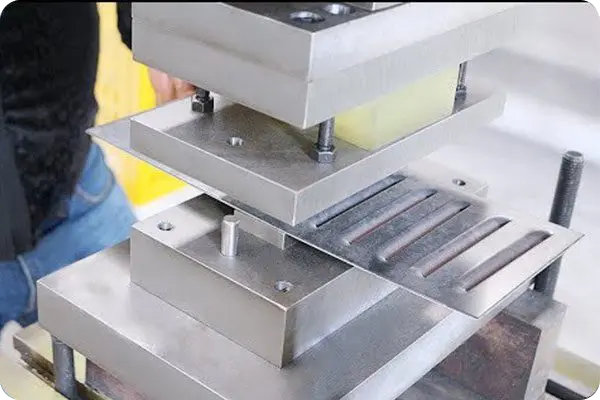
Types of Punch Press Machines
Punch press machines are integral to modern manufacturing, and their various types offer different advantages based on the requirements of specific applications. Here, we delve into the diverse types of punch presses available in the market:
Mechanical Punch Presses
Mechanical punch presses are known for their speed and precision. They operate via an electric motor which powers a flywheel, transferring energy to the crankshaft, creating a stamping motion. This category can further be broken down into:
Hydraulic Punch Presses
Hydraulic punch presses use hydraulic fluid to generate force. They offer control and versatility with the ability to adjust the pressure and stroke length, making them suitable for a wide range of applications.
Pneumatic Punch Presses
Pneumatic punch presses operate using compressed air to generate the stamping force. They are lightweight, easy to operate, and require minimal maintenance, making them a cost-effective option for various manufacturing tasks.
Servo Punch Presses
Servo punch presses are the epitome of modern technology in the realm of punch presses. They use servo motors to control the stamping motion, offering a high level of precision and energy efficiency. With adjustable speed and stroke length, servo punch presses provide unparalleled flexibility and control, meeting the diverse needs of today's fast-paced manufacturing environment.
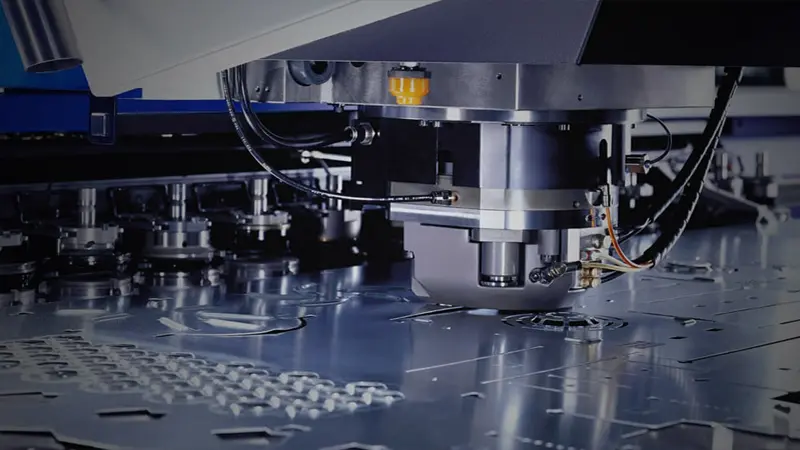
Core Components and Their Functions of Punch Press Machines
Understanding the core components of punch press machines is essential for maximizing their functionality and ensuring a high level of operational efficiency. Here, we dissect the fundamental parts of a punch press machine and explore their respective roles in the punching process:
Frame
The frame is the skeletal structure of the punch press machine, designed to withstand the rigorous forces generated during the punching process. It houses all other essential components and ensures the machine remains stable and durable over time, even under the most demanding manufacturing conditions.
Ram
The ram is a crucial moving part of the punch press machine, tasked with delivering the necessary force to the punch which in turn creates the desired shape in the metal workpiece. Its smooth, precise movement is fundamental to achieving accurate and consistent results in the punching process.
Bed
The bed, also known as the bolster plate, is the stationary platform where the workpiece is placed. It's designed to support the workpiece securely, ensuring it remains in the correct position throughout the punching process. A well-designed bed is crucial for achieving the desired level of precision and quality in the finished product.
Die and Punch
The die and punch are the heart and soul of the punch press machine. The punch, mounted on the ram, moves downward into the die, which is securely fixed on the bed, to create the desired shape in the metal sheet. The design and quality of the die and punch significantly affect the precision and lifespan of the punching process, making them critical components in the machine.
Working Principle of Punch Press Machines
The working principle of punch press machines is a harmonious interplay of mechanics and engineering precision. Understanding this principle is crucial for optimizing the machine's performance and ensuring a seamless manufacturing process. Let's delve into the core of the operation:
The Stamping Process
The stamping process is central to the working of a punch press machine. It involves the conversion of a flat metal sheet into a specific shape or design, executed by the precise movement of the punch and die. The metal sheet is placed on the bed of the machine, and the punch descends into the die, shearing or stamping out the desired form. The accuracy of the stamping process is a testament to the machine's engineering integrity, ensuring each workpiece is crafted to the exact specifications required.
Movement and Force Mechanisms
The movement and force mechanisms are the driving forces behind the stamping process. Depending on the type of punch press machine, these mechanisms might be driven by mechanical, hydraulic, pneumatic, or servo systems. The ram, powered by these systems, generates the necessary force, while the controlled movement ensures the punch aligns perfectly with the die. This precise coordination between movement and force is crucial for producing high-quality, consistent outputs, irrespective of the complexity of the design.
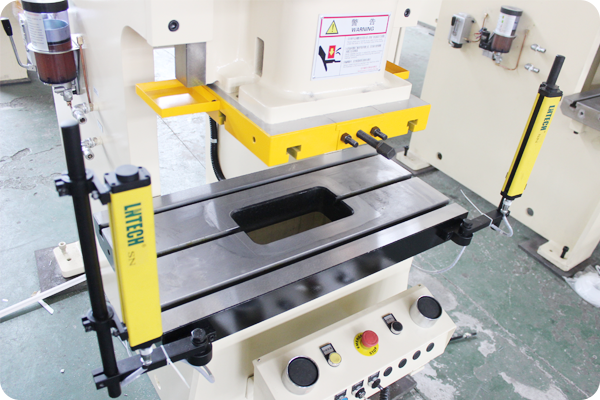
Applications of Punch Press Machines
Punch press machines are versatile assets in the manufacturing industry, capable of handling a wide array of tasks. The scope of their applications extends across various domains, all tied to the central theme of transforming metal sheets into functional pieces. Let's explore some of the prominent applications:
Metal Forming
Metal forming is a broad term that encompasses a range of techniques aimed at shaping metal sheets into desired forms. Punch press machines excel in this domain, providing the ability to execute complex forming operations with high precision and efficiency. Whether it's bending, drawing, or stamping, the punch press is a reliable tool for metal forming, catering to the demands of various industrial sectors.
Sheet Metal Fabrication
Sheet metal fabrication is a pivotal application of punch press machines. They play a vital role in cutting, forming, and assembling metal sheets, facilitating the creation of durable and functional products. From automotive parts to household appliances, the contribution of punch press machines in sheet metal fabrication is significant, underscoring their value in modern manufacturing.
Precision Engineering
Precision engineering is about creating intricate parts with tight tolerances and high levels of accuracy. Punch press machines are instrumental in achieving these standards. Their precise control over the stamping process allows for the creation of complex geometries with exact dimensions, making them indispensable in industries like aerospace, medical, and electronics where precision is paramount.
Advantages of Using a Punch Press
Utilizing a punch press machine in manufacturing processes brings about a host of advantages that significantly enhance productivity and product quality. Here are some of the key benefits:
Speed and Efficiency
One of the primary advantages of using a punch press is the speed at which it operates. The rapid stamping action allows for a high throughput, making it a highly efficient tool for mass production. The automated nature of punch press machines minimizes manual intervention, reducing the likelihood of operational bottlenecks and ensuring a smooth workflow.
Quality and Accuracy
The precision engineered components of a punch press machine ensure a high degree of accuracy in the stamping process. This accuracy translates to superior quality in the finished products, meeting the exact specifications and tolerances required in precision-oriented industries. Furthermore, the consistency of output over time underscores the reliability of punch press machines in delivering quality products.
Scalability
Punch press machines are designed to cater to a range of production volumes, offering scalability to manufacturers. Whether it's a short run or a large-scale production, the punch press can be configured to meet the varying demands, providing a scalable solution that grows with your manufacturing needs. This scalability makes punch press machines a viable long-term investment for businesses looking to expand their production capabilities.
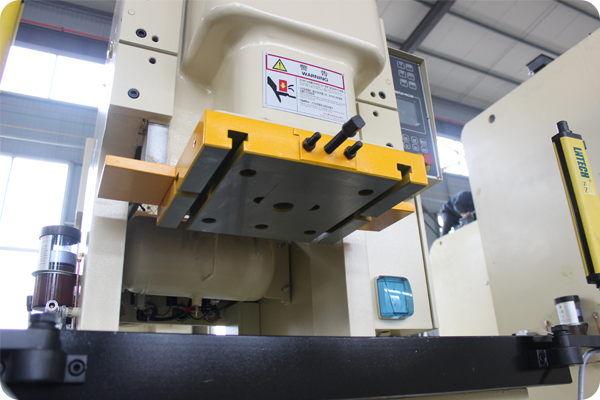
Safety Measures and Best Practices
Adhering to safety measures and following best practices is imperative to ensure the well-being of operators and the longevity of punch press machines. Here we outline some crucial safety guidelines and maintenance protocols:
Operator Safety
The safety of the operator should always be the priority. Some key safety measures include:
- Proper Training: Ensure that operators are well-trained on the functioning and safety protocols of the punch press machine.
- Use of Protective Gear: Operators should wear appropriate protective gear such as gloves, eye protection, and ear protection to shield against potential hazards.
- Emergency Stops: Ensure that emergency stop buttons are easily accessible and functional.
- Safe Distance: Maintaining a safe distance from moving parts to prevent any accidents.
- Clear Work Area: Keep the work area clean and free from obstructions to avoid slips and falls.
Maintenance and Inspection
Regular maintenance and thorough inspections are crucial for the optimal performance and safety of the punch press machine. Some maintenance best practices include:
- Routine Inspection: Conduct routine inspections to check for any wear and tear or misalignments in the machine components.
- Lubrication: Regular lubrication of moving parts to ensure smooth operation and reduce wear.
- Replacing Worn Out Parts: Promptly replace any worn out or damaged parts to maintain the machine's performance and safety.
- Adherence to Manufacturer’s Guidelines: Follow the maintenance guidelines provided by the Punch Press Manufacturer and Hydraulic Press Manufacturer to ensure the longevity of the machine.
- Documentation: Maintain a log of all maintenance and inspection activities to keep track of the machine’s condition and service history.
Adhering to these safety measures and maintenance best practices will not only ensure a safe working environment but also extend the lifespan and efficiency of the punch press machine, making it a reliable asset in your manufacturing operations.
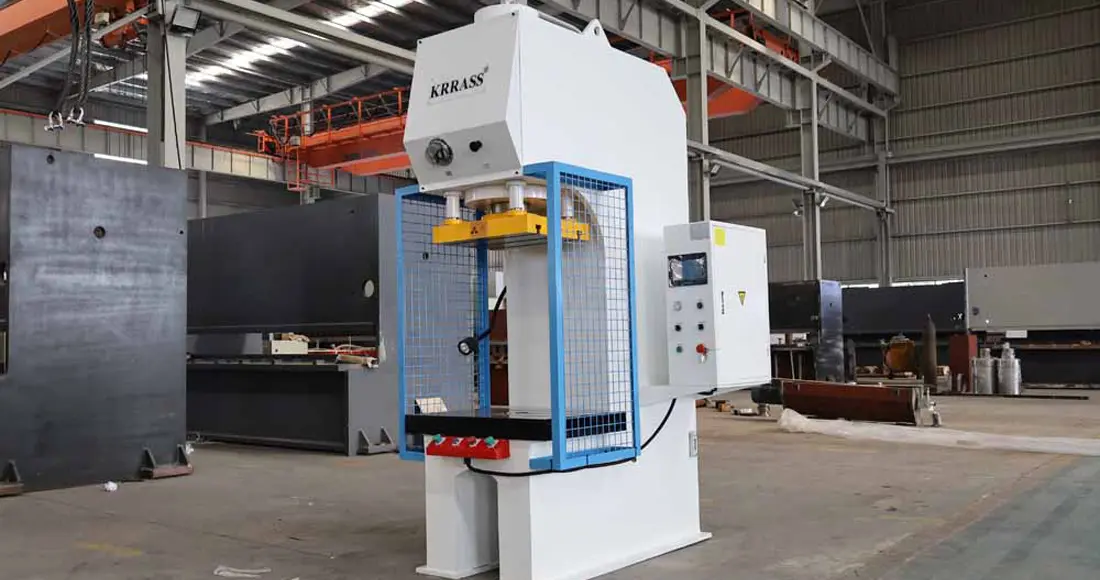
How Does a Punch Press Compare to Other Forming Machines?
The manufacturing industry is home to a variety of forming machines, each with its unique capabilities and applications. Among them, the punch press stands out for its precision and versatility. Here, we compare the punch press to other forming machines, shedding light on their distinct advantages and suitable applications:
Punch Press vs Hydraulic Press
While both machines are utilized for forming operations, they differ in their working mechanisms and applications. The punch press is known for its high-speed operations and is ideal for punching and stamping tasks. On the other hand, hydraulic presses operate at lower speeds but provide greater force, making them suitable for deep drawing and forming of thicker materials.
Punch Press vs Press Brake
Press brakes are specialized in bending operations. They offer a high degree of precision in creating bends, but their functionality is limited compared to punch presses. Punch presses are more versatile, capable of punching, forming, and even bending, making them a more comprehensive solution for various metalworking tasks.
Punch Press vs Turret Punch Press
Turret punch presses are a type of punch press with a turret, allowing for a greater variety of tools to be used in a single setup. This leads to enhanced flexibility and the ability to perform a wider range of operations. Standard punch presses may have a fixed setup, making them faster for repetitive tasks, while turret punch presses provide more versatility for complex or varied workpieces.
Each of these forming machines has its place in the manufacturing arena, with the choice depending on the specific requirements of the task at hand. Engaging with a knowledgeable Punch Press Manufacturer and Hydraulic Press Manufacturer can provide insights into the most suitable machine for your operations, ensuring you make an informed decision that aligns with your production goals.
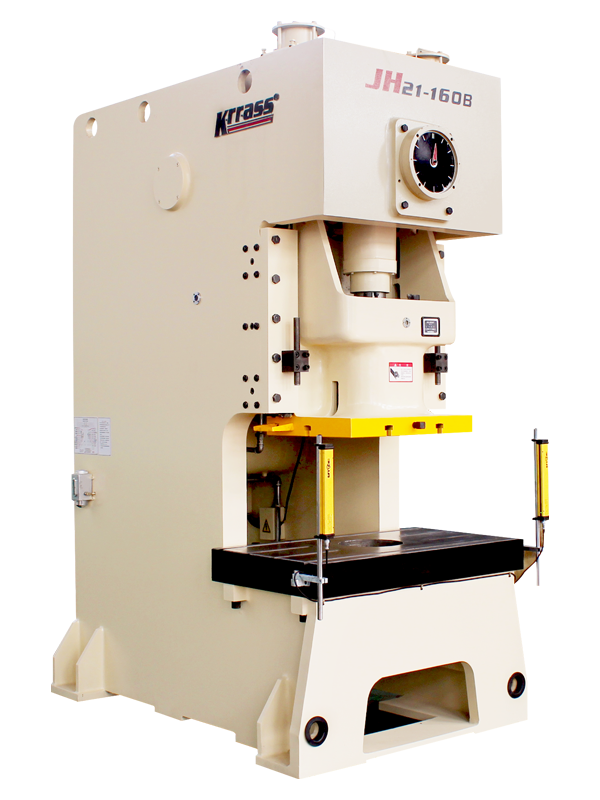
Common Materials Processed Using a Punch Press
Punch press machines are revered for their ability to handle a variety of materials, aiding in the creation of diverse products across multiple industries. The following are some of the common materials processed using a punch press:
Steel
Steel is a common material processed using punch presses due to its strength and durability. Whether it's stainless steel or carbon steel, punch presses can efficiently shape these materials into desired forms.
Aluminum
Aluminum is another frequently used material due to its lightweight and corrosion-resistant properties. Punch presses can handle aluminum sheets with precision, creating accurate and high-quality parts.
Copper
Copper is known for its excellent electrical conductivity, and punch press machines are adept at forming this material into electrical components and other products.
Brass
Brass, with its decorative appeal and good machinability, is another material well-suited for processing with punch presses.
Plastics
Though typically associated with metalworking, punch presses can also process certain types of plastic materials, expanding their application scope.
How to Choose the Right Punch Press for Your Business
Selecting the right punch press is a pivotal decision that can significantly impact your business’s productivity and profitability. Here's a structured approach to guide you through this crucial selection process:
Assess Your Needs
Begin by evaluating the specific needs of your business including the types of materials you'll be working with, the complexity of the tasks, and the production volume.
Research Different Types
Familiarize yourself with the different types of punch presses such as mechanical, hydraulic, and servo punch presses. Each type has its own set of advantages and is suited for particular applications.
Consult with Manufacturers
Engage with reputable Punch Press Manufacturers and Hydraulic Press Manufacturers to gain insights into the machines’ capabilities and to find a machine that aligns with your operational needs.
Consider the Machine's Specifications
Look into the technical specifications of the machines including their size, tonnage, speed, and control systems to ensure they meet your requirements.
Evaluate the Total Cost of Ownership
Consider the purchase price, installation costs, operational costs, and maintenance costs to understand the total cost of ownership and ensure it fits within your budget.
Check for After-sales Support
Ensure the manufacturer provides robust after-sales support including maintenance, parts replacement, and training to guarantee the machine's longevity and your team’s ability to operate it efficiently.
By meticulously analyzing your needs, researching the available options, and consulting with experienced manufacturers, you can make an informed decision that will serve your business well in the long-term.
Choosing the Right Punch Press Manufacturer
Your choice of a punch press machine is a significant decision that demands a thorough understanding and a keen eye for quality. Partnering with a leading Punch Press Manufacturer is crucial in ensuring you receive a machine that aligns with your operational needs and stands the test of time. Krrass is a frontrunner in the industry, offering a wide range of high-quality punch press machines tailored to meet the diverse demands of modern manufacturing setups. Their expertise and robust after-sales service ensure you have the support you need for a seamless operation. Explore their extensive range of products on www.krrass.com and take a step towards transforming your manufacturing processes today.
